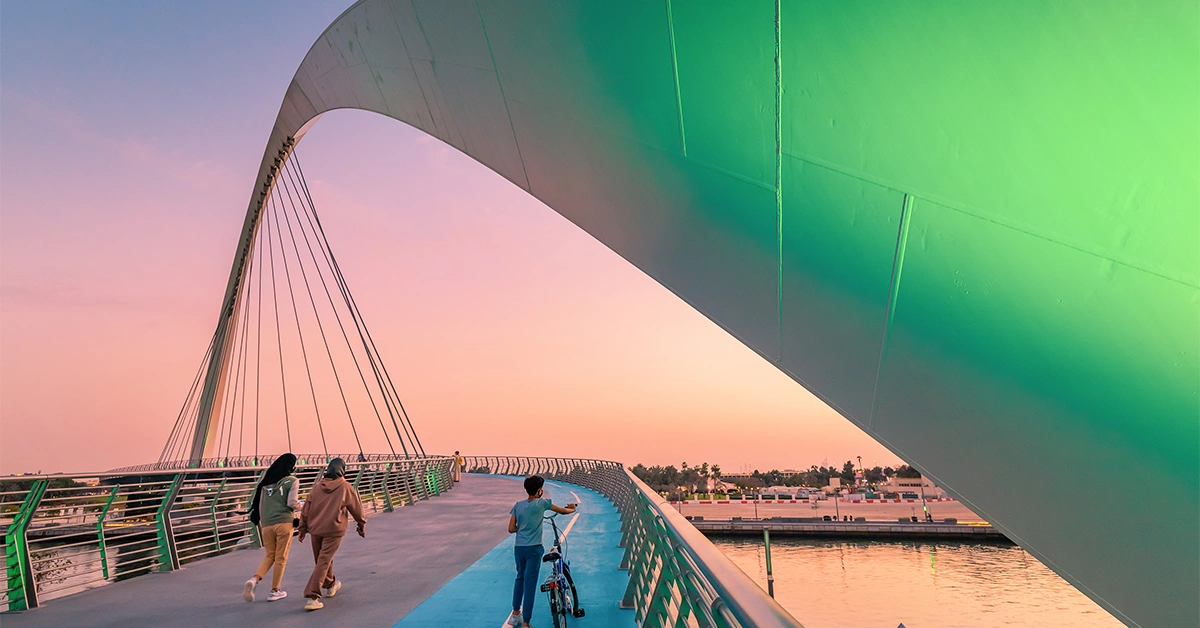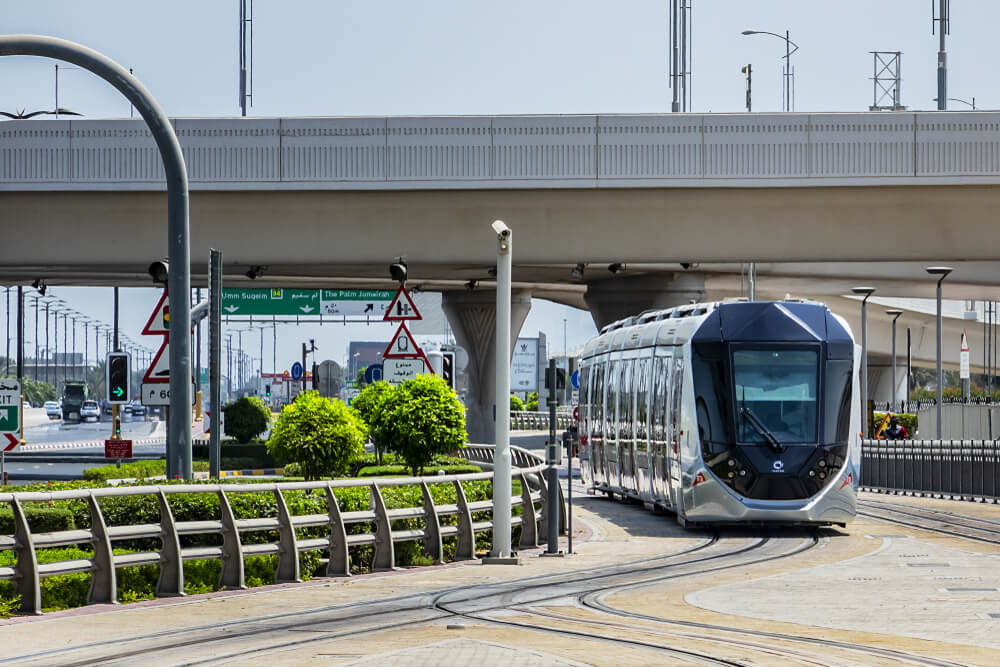Dubai has long been at the forefront of architectural innovation and technological advancements. That said, the megacity’s latest venture, The Loop, is no exception. This project aims to promote urban mobility in Dubai by making walking and cycling the primary transportation mode by 2040.
Let’s learn in detail about the Dubai Loop Project. From its core vision to features, here’s all you need to know about this initiative.
What Is The Loop?
The Dubai Loop Project is developed by the globally renowned sustainable design firm URB. The Loop aligns with Dubai’s ambitious 20-minute city initiative and the Dubai 2040 Urban Master Plan.
In addition, The Loop is a cutting-edge, climate-controlled, fully enclosed cycling and pedestrian superhighway that will span 93 kilometres across key areas of Dubai. Plus, The Loop addresses one of the most significant barriers to active mobility in the UAE: the extreme climate.
The entire pathway will be housed within a glazed, futuristic structure elevated on stilts. These elements will provide a safe and sheltered environment for residents to walk, jog, or cycle year-round.

Key Features and Innovations of The Loop
Here are some key features of the Dubai Loop Project.
1. Length and Connectivity
The Loop will be a 93-kilometre pathway that will connect more than 3 million residents to essential services. These include workplaces, recreational areas, and neighborhoods, all within a 20-minute walk or bike ride.
2. Climate Control
Given Dubai’s extreme climate, The Loop will feature a unique climate-controlled design. The glazed enclosure will protect users from intense heat, dust, and humidity.
This climate-controlled space lets you walk, jog, or cycle comfortably. Even in peak summer, when temperatures go over 40°C, it’s still usable.
3. Sustainability Features
Sustainability is at the heart of The Loop’s design. It will incorporate kinetic flooring, which generates clean electricity from the movement of footsteps and bike tyres.
Additionally, solar panels will be integrated into the structure to harness renewable energy. Meanwhile, recycled water irrigation will keep the greenery thriving without draining valuable resources.
These measures will reduce The Loop’s carbon footprint. They will also help ensure that the infrastructure remains energy-efficient and environmentally friendly.
4. Multi-Use Spaces
The Loop will be much more than a simple transportation route. It will also be a public space with urban farming spaces and pocket parks.
The urban farming spaces will provide locally grown produce, contributing to food security. They will also reduce the carbon footprint associated with food transportation.
Wellness centres and sports courts will encourage residents to engage in physical activities. Additionally, pocket parks along the route will offer green spaces where people can relax, exercise, or socialise.
5. Integration with Urban Masterplan
The Loop is a key part of Dubai’s broader 2040 Urban Masterplan. It aims to make the city more sustainable, livable, and less dependent on cars and public transport in Dubai.
This ambitious project is an essential component of Dubai’s drive to become the world’s most liveable city. It will make the megacity a place where accessibility, convenience, and environmental consciousness go hand in hand.

FAQs
The project is currently in the research and development phase. While an exact completion date hasn’t been announced, it aligns with Dubai’s 2040 Urban Master Plan.
The Loop is a 93-kilometre climate-controlled, urban highway for walking, running and cycling. Developed by URB, it aims to connect over 3 million residents to Dubai’s key, promoting sustainable and healthy transportation.
Yes, The Loop ensures that residents can comfortably use the pathway throughout the year, regardless of external weather conditions.
The Dubai Loop Project is not just a new cycling and walking path. It is a vision of how urban spaces can foster health and sustainability. With climate control, renewable energy, and community-focused amenities, active transportation will be practical and sustainable.
Even in the real estate sector, the megacity is making massive strides. For instance, many green communities in Dubai promote a sustainable living experience.